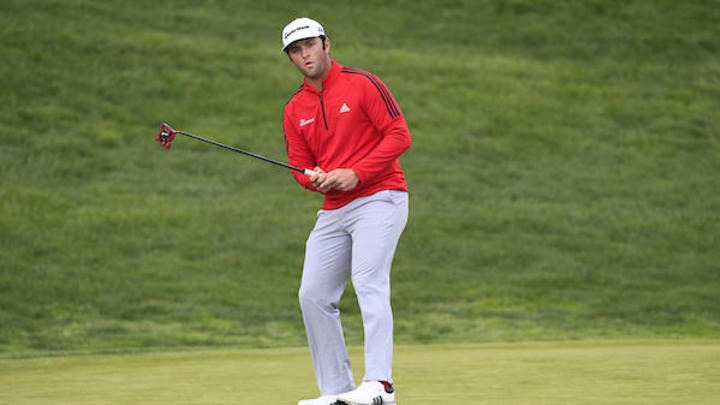Hispanics change face of golf in U.S.

WASHINGTON – The events and meetings surrounding the 11th National Golf Day here Wednesday revealed an unexpected and little-known fact: More than 3 million Hispanics play golf in the United States.
According to the World Golf Foundation, 32 million participate in golf in the U.S. Of that total, 24 million regularly play on traditional courses and a steadily growing total of 8 million use off-course facilities such as driving ranges and the booming Topgolf entertainment formula.
It should come as no surprise that more than half of all golfers worldwide live in the U.S. What is perhaps unexpected is that there are six times more Hispanic golfers in the U.S. than in the rest of the Spanish-speaking world – Latin America’s 200,000 and Spain’s 270,000 – combined.

© GOLFFILE/THOS CAFFREY
Jon Rahm delivers crossover appeal to Hispanics in the U.S. as a Spaniard who played college golf at Arizona State.
Several elements have contributed to the diversification of golfers in the U.S. For starters, 75 percent of the facilities are open to the public, in stark contrast with the Southern Hemisphere and Spain, where private country clubs and exclusive courses for foreign tourists remain the norm.
Another factor is what Steve Mona, the World Golf Foundation’s chief executive, calls the “changing face of the game.” In the U.S., home to more than 60 million Hispanics, the number of Spanish-speakers has more than doubled since the 1990s.
There are clear indications that this changing face will continue to evolve in golf. Of the 5 million kids introduced to the game by The First Tee in 2017, about 25 percent, or roughly 1.15 million, claim Hispanic ethnicity. Most of them will keep playing golf for decades, according to the WGF’s predictions.
With the current projections, each year close to 1 million Hispanics will join the U.S. golfing ranks, both as fans and players. And consistent with the general increase of women in golf, the largest surge of Hispanic participation will be in junior females.
Some golf organizations have started to pay close attention to this trend, not only in participation, but also in terms of audience. The PGA Tour has spent the better part of the past year exploring how to reach out to Hispanics in the U.S., with a special focus on the younger generations.
According to the Pew Research Center, almost 6 in 10 of all Hispanics in the U.S. are millennials (ages 18 to 33) or younger, speak mainly English and share similar interests with their peer group. However, these young Hispanics navigate two worlds and keep a connection with their culture and popular heroes.
During the past few years of covering Hispanic, Latin American and Spanish professional golfers, I have noted how Hispanic fans tend to follow players such as Abraham Ancer, Emiliano Grillo or Jon Rahm on the course.
In fact, Ancer, Grillo and Rahm – twentysomethings from Mexico, Argentina and Spain, respectively – epitomize the new generation of Hispanic golfers and golf fans. They have studied and come of age in the United States, fully embracing the American way of life. But they also preserve their language, food and family traditions, including passion for their local soccer teams.
The steady increase in participation is not the only contribution of Hispanics to the record level of expenditure in golf ($84.1 billion in 2016) highlighted during National Golf Day. The expected and better-known fact that Hispanics make up a large portion of the approximately 2 million jobs in the golf industry also merits the celebration of a Día Nacional del Golf.
Juan Luis Guillen is a Spanish golf, food and travel writer based in the U.S. He can be reached at juan@golfgusto.com or www.instagram.com/golfgusto
